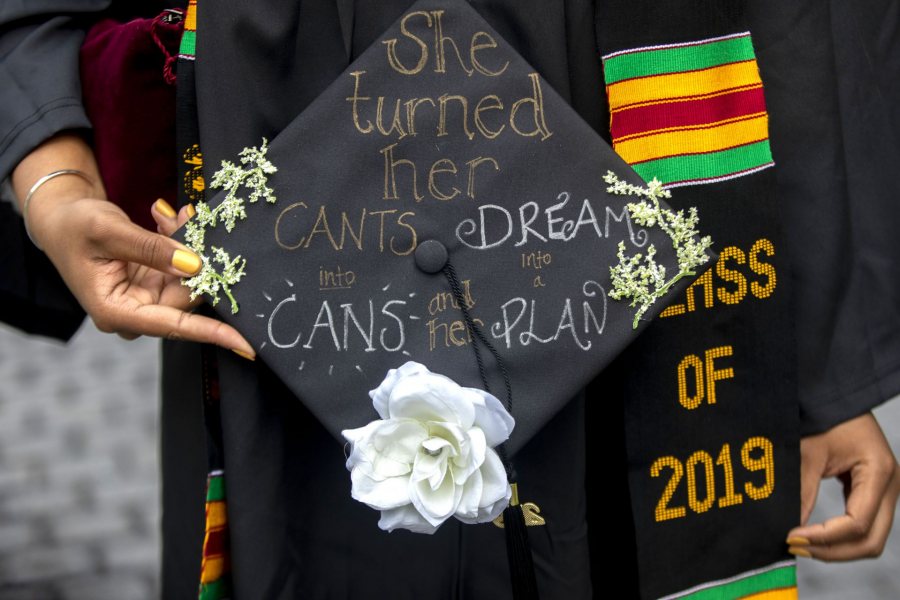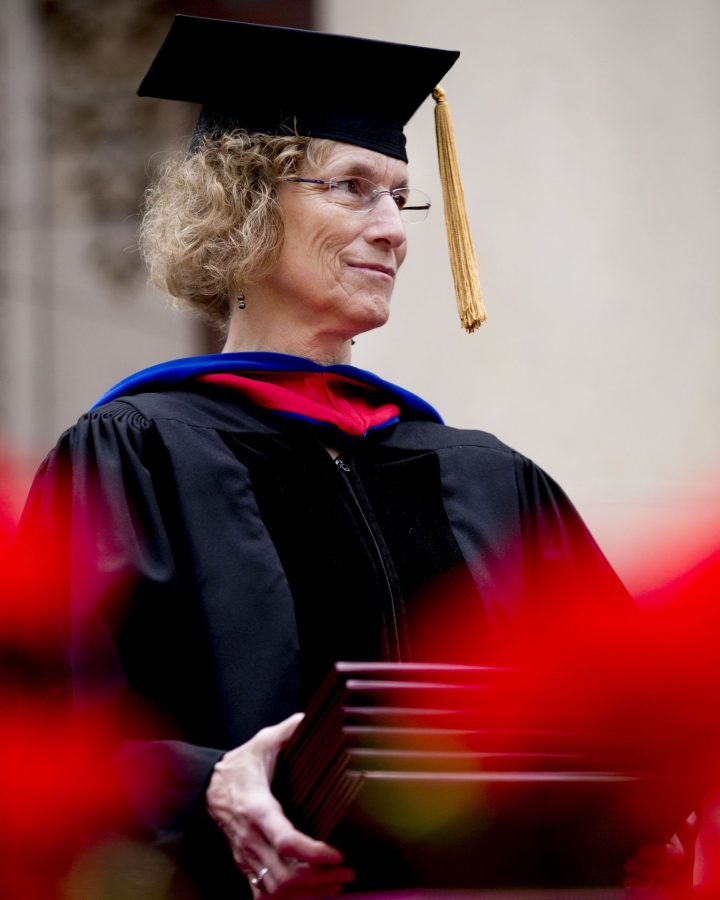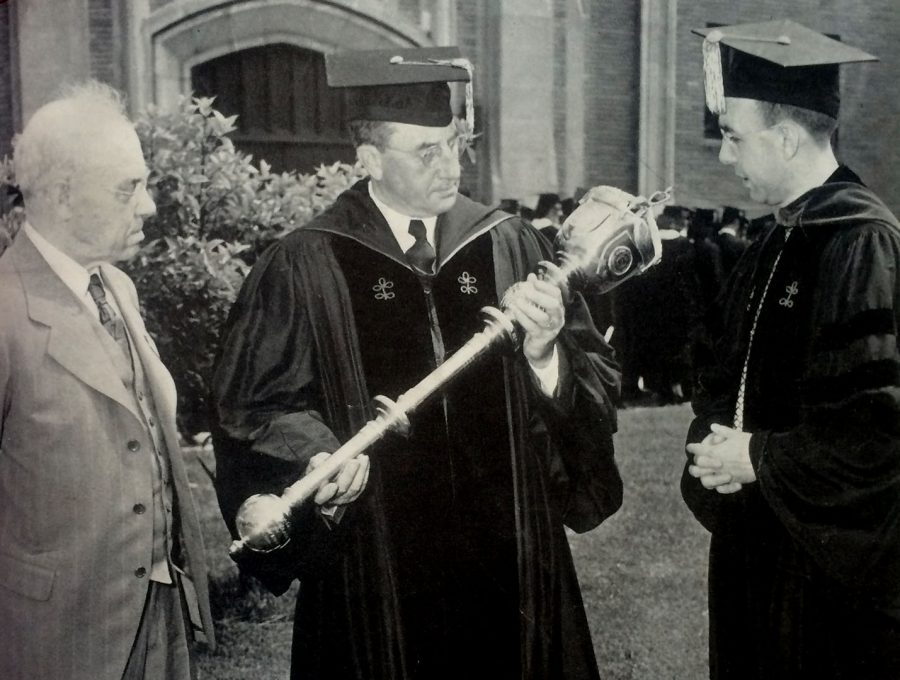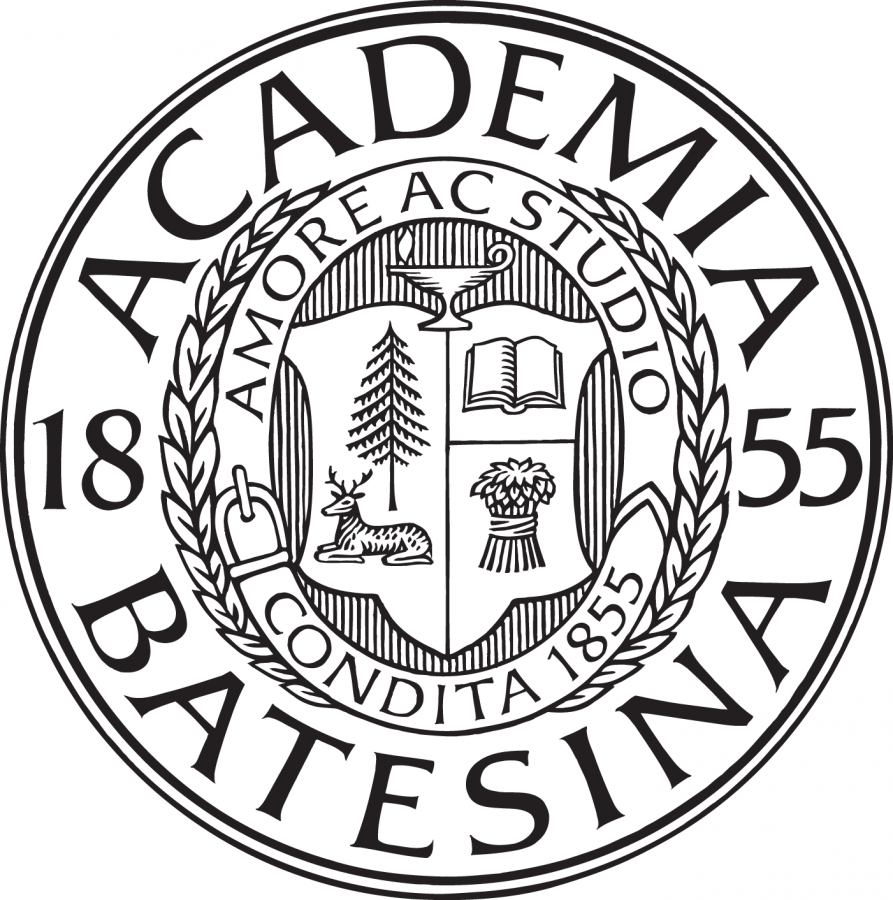Commencement Regalia
The sights and sounds of this year’s Commencement livestream will evoke the event’s medieval source — including participants wearing traditional academic regalia — and also highlighting the personal and individual touches that have always made a Bates Commencement distinctive.

Respecting the rituals of an academic community, Bates opens its year with an assembly of scholars and students in convocation. For the Class of 2020, their first Convocation occurred on Sept. 6, 2016.
At the end of that year, the graduation of students from one academic status to the next higher is likewise marked by ceremony. It is then that first-year students become sophomores; sophomores, juniors; juniors, seniors; and seniors, holders of the baccalaureate degree.
Both faculty and students wear academic dress prescribed by the highest degree attained. The bachelor’s cap and gown are black, the latter with pointed open sleeves. (The master’s gown, also black, has short sleeves closed at the elbow with long false sleeves cut in an arc.)
While the bachelor’s gown is traditionally unadorned, Bates seniors often make their outfits their very own in creative ways, including personalized mortarboards and wearing items that have meaning to them.
Seniors talk about how they made their Commencement regalia their own in 2018.
The doctor’s gown has long bell-shaped sleeves and, though usually black, may be of a color indicating the university awarding the degree. It is faced with velvet and has three velvet bars on the sleeves. The colors bordering the hoods on academic gowns indicate the field of study in which the doctoral degree was taken.
In the United States, the hood features colors associated with the wearer’s highest degree and, in many cases, also the institution that granted the degree. Usually black, the trims colors indicate the degree, and the hood’s interior lining displays the colors of the degree-granting institution.
As the bachelor of arts hood at Oxford and Cambridge was trimmed in lamb’s wool or rabbit’s fur, hoods of arts and letters graduates today are edged in white.

It has been said that the preoccupation of alchemists with turning base metals into gold accounts for the yellow of the science graduate’s hood, and the green of medicinal herbs for the green of the hood of a graduate in medicine.
The red of theology has been a traditional color of churches, while blue has long been associated with the faculty of philosophy, and purple with the faculty of law. Among other academic colors are the light blue of education, pink of music, and brown of fine arts.

The mace, an ancient symbol of power and authority, is borne by the senior faculty member leading the academic procession. Engraved with the names of the Bates presidents, the college mace was fashioned by Leverett H. Cutten and is the gift of the Class of 1904. Two-thirds of the way up the staff, on a bulge known as the knop, raised lettering indicates the major divisions of liberal-arts studies at Bates: fine arts, natural sciences, social sciences, and humanities.
Just above the knop is a sphere woven of 36 strips of silver, the number of states of the Union when the College was founded. On the head of the mace are the armorial bearings of Bates, the city of Lewiston, the state of Maine, and the United States of America. At the top is a large garnet, the gem and color of the college.

Another tradition to which Bates College adheres is that of having a seal, or — more properly — a coat of arms. In heraldic terms it may be described as:
“A shield, per pale; the sinister half, per fess. On the dexter side, a pine tree with a stag at the foot of it, lodged. On the sinister chief, an open book; and on the sinister base, a sheaf of grain. Surmounted by a crest, a lighted lamp. And the motto: Amore ac Studio, ‘With ardor and devotion.’”